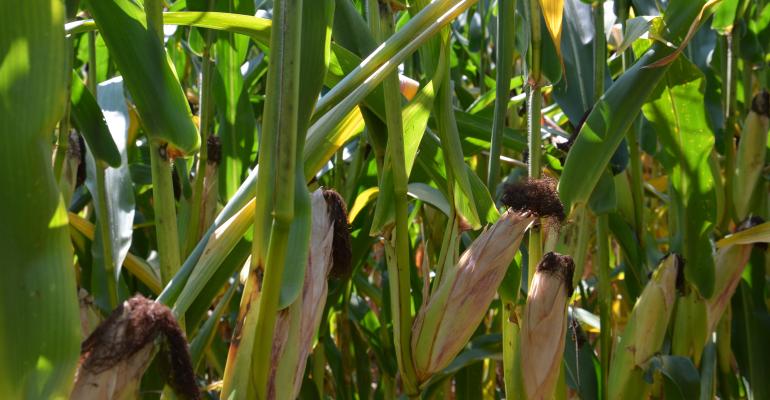Don’t ignore rootworm beetles in corn

Corn Pest Beat: If you find lots of beetles while estimating yields, think about management decisions for 2019.
Jul 12, 2018
I was estimating corn yields and rootworm beetles were flying everywhere. Corn was already silked. Does this mean I will have rootworms next year if I go back to corn in that field? What if I put the neighboring soybean field in corn? Will I need an insecticide there next year?
The Indiana certified crop advisers panel includes Don Burgess, agronomist with A&L Great Lakes Labs, Fort Wayne; Jesse Grogan, agronomist with AgReliant Genetics, Lafayette; and Bryan Overstreet, Purdue University Extension ag educator in Jasper County.
Burgess: Perform beetle counts to see how high levels are to determine if an insecticide or protected hybrid is needed. Counts should be done by looking at the number of adults per plant. Purdue publishes economic thresholds based on number of adults detected, and these thresholds can be found online.
The number of beetles required to meet the threshold level varies by plant population and soil conditions. In general, if you’re seeing more than one beetle per two plants, there’s a greater chance that rootworm protection will be needed for the following season.
If you’re seeing a population of rootworm beetles greater than or equal to threshold levels, an insecticide and/or protected hybrid should be used. If levels are below the threshold levels, continue to monitor these fields to watch for increases in activity which may warrant treatment in the following corn crop.
It is wise to monitor neighboring soybean fields as well, due to the possibility of variants in those fields. If you see high populations in these fields, use an insecticide and/or protected hybrid.
Grogan: Corn rootworms flying around in your cornfield does indicate that they could be a problem for next year’s corn crop. Today, corn rootworm populations emerge later than they did 10 to 15 years ago. This indicates that more rootworms had probably emerged or migrated into your fields earlier.
Female rootworms will lay eggs in your cornfield and in neighboring soybean fields where you will plant corn next year. It would help if you could collect adult beetle counts per plant, but it’s difficult to do when beetles are feeding on late pollen caught in leaf sheaths and around the tassel. A soil insecticide or rootworm trait in your corn hybrid would be a measure to limit damage and yield loss in next year’s crop.
Overstreet: You’ll need to count beetles on two plants in 20 places in the field. If this field is first-year corn and you have 28,000 plants per acre and an average of 0.5 beetle per plant on normal soil conditions, you would need to plan on rotating to soybeans or treat for rootworm larvae. If this field is in continuous corn, the threshold for rotating or treating would be 0.7 beetle per plant.
Depending what part of Indiana you’re in, there have been issues with a behavioral variant of the western corn rootworm beetle. It first appeared over two decades ago, and lays eggs in neighboring soybean fields. There are not very good threshold numbers available for determining if the field should be treated. More information on the method of scouting and thresholds is online.
Editor’s note: The phenomenon of rootworms laying eggs in soybean fields moved into northwest Indiana first, but has been found in various locations across northern Indiana and in a few pockets in southern Indiana.

